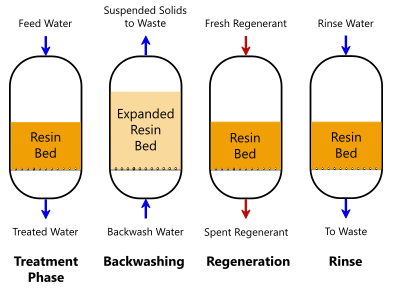Innovative PFAS Therapy Solutions for Safer Water
The boosting prevalence of PFAS contamination in water products requires a vital exam of ingenious therapy solutions. In addition, emerging bioremediation strategies supply a more sustainable approach to tackling PFAS difficulties. pfas management.
Review of PFAS Contamination
PFAS contamination has actually become a significant environmental and public wellness worry. Per- and polyfluoroalkyl substances (PFAS) are a team of synthetic chemicals known for their persistence in the atmosphere and human body, leading them to be typically referred to as "forever chemicals." These compounds have been extensively utilized in numerous markets, including firefighting foams, water-repellent textiles, and food product packaging, primarily because of their water- and grease-resistant buildings.
The prevalent usage of PFAS has resulted in their discovery in dirt, water products, and even in the blood of people and animals. Researches have actually connected PFAS direct exposure to many wellness issues, including developing impacts in infants, body immune system dysfunction, and various kinds of cancer. In addition, the ecological persistence of these substances complicates their destruction and elimination, raising concerns regarding lasting ecological influences.
Governing bodies are significantly applying stringent guidelines to check and lower PFAS degrees in alcohol consumption water and other environmental tools. As recognition of PFAS contamination expands, it has actually ended up being important for communities and sectors to look for efficient therapy services to alleviate exposure and secure public health and wellness.
Advanced Purification Technologies
As the necessity to deal with PFAS contamination increases, progressed filtering technologies have actually arised as a critical component in the remediation initiatives focused on getting rid of these relentless chemicals from water sources. These innovations take advantage of innovative devices to properly target and record PFAS substances, which are notoriously resistant to standard treatment techniques.
One of the most promising techniques is using granular turned on carbon (GAC), which adsorbs PFAS molecules as a result of its high area and porous structure. This approach has actually been commonly carried out in both community and commercial settings, demonstrating substantial decreases in PFAS focus. In addition, ion exchange resins have actually obtained grip, specifically designed to precisely bind PFAS ions from water, hence promoting their removal.
Membrane filtration modern technologies, such as reverse osmosis and nanofiltration, likewise show efficacy in PFAS elimination by literally separating contaminants from water - pfas management. These systems can attain high levels of pureness, making them ideal for drinking water applications
Chemical Treatment Innovations
Many chemical treatment innovations are being discovered to successfully resolve PFAS contamination in water materials. One promising strategy entails making use of advanced oxidation processes (AOPs), which use powerful oxidants such as ozone, hydrogen peroxide, or chlorine dioxide integrated with UV light to break down PFAS compounds right into much less dangerous compounds. This method has actually shown efficiency in laboratory settings, revealing potential for scalability in real-world applications.
Another ingenious technique is the growth of ion-exchange resins specifically made to target PFAS. These materials can uniquely adsorb PFAS substances from water, enabling for their elimination throughout therapy processes. Current advancements have actually enhanced the effectiveness and ability of these materials, making them a beneficial alternative for water therapy facilities.
In addition, researchers are exploring using chemical representatives like persulfate and ferrous ions to improve the degradation of PFAS in contaminated water. These agents can cause chemical responses that assist in the failure of relentless PFAS compounds.
Emerging Bioremediation Techniques
Current advancements in chemical therapy innovations have led the way for discovering bioremediation techniques as a practical alternative for resolving PFAS contamination. Bioremediation uses the natural metabolic processes of microbes to deteriorate or change toxins, making it my sources an appealing technique for dealing with persistent contaminants like PFAS.
Emerging methods in bioremediation include the use of genetically engineered bacteria that can particularly target and break down PFAS substances. These microbial pressures More Bonuses are being established for their improved destruction capabilities, increasing the performance of the remediation procedure. In addition, researchers are investigating the capacity of plant-assisted bioremediation, where certain plant species might uptake and sequester PFAS from contaminated dirt and water.
Another appealing technique is the application of bioaugmentation, which entails introducing useful bacteria right into infected environments to boost the degradation of PFAS. This technique can assist in quicker removal timelines and enhance general effectiveness.

Regulative Frameworks and Requirements
A thorough regulatory structure is necessary for efficiently handling PFAS contamination and ensuring public health and wellness defense. The raising acknowledgment of per- and polyfluoroalkyl compounds (PFAS) as environmental contaminants has actually triggered numerous federal and state agencies to establish requirements that regulate their visibility in water supplies. The U.S. Environmental Security Firm (EPA) has actually established health and wellness advisories and is pursuing setting enforceable limits for PFAS in drinking water.
State-level guidelines vary substantially, with some states embracing more stringent standards than those recommended by the EPA. These policies often consist of optimum contaminant levels (MCLs) for certain PFAS compounds, surveillance demands, and reporting obligations for water energies. In my site addition, arising frameworks concentrate on the remediation of infected sites, emphasizing the requirement for efficient treatment innovations.

Final Thought
In final thought, the growth and execution of ingenious PFAS therapy options are vital for dealing with the prevalent issue of water contamination. Advanced filtering modern technologies, chemical treatments, and arising bioremediation strategies collectively present a diverse method to properly lower and degrade PFAS levels. As governing structures proceed to advance, integrating these technologies will be vital to protect public health and restore the stability of infected water sources, eventually contributing to a cleaner and safer setting.